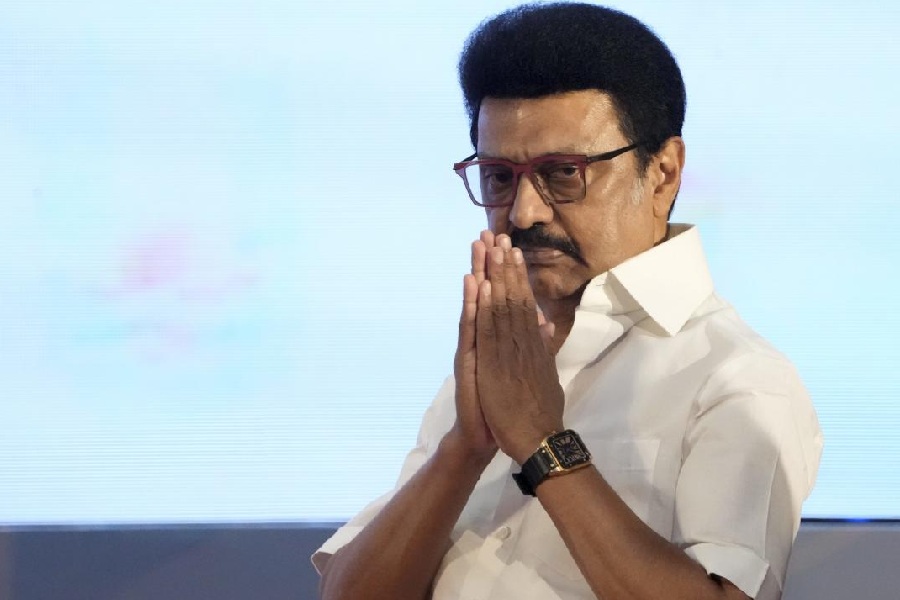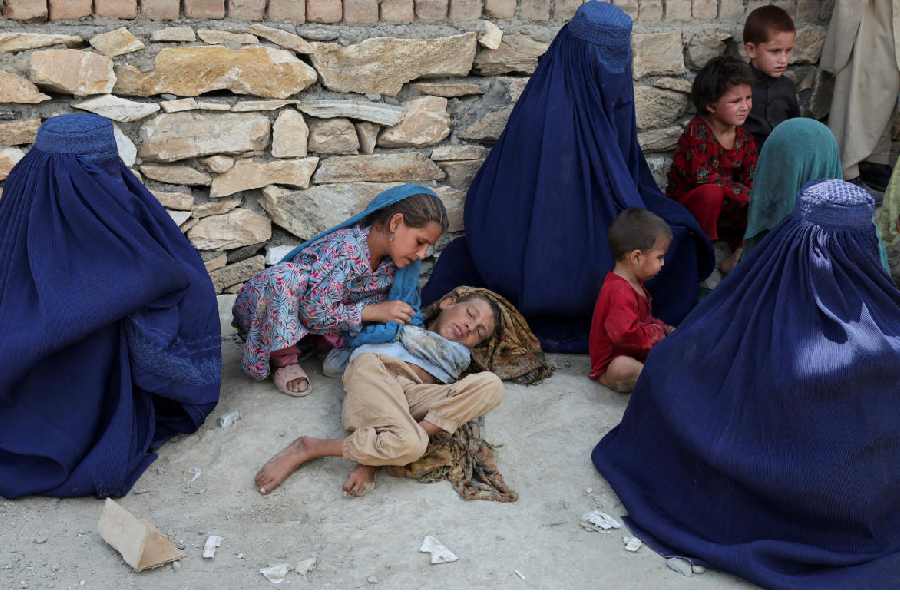 |
| The 14th century copper plates. Picture by S.H. Patgiri |
Guwahati, Jan. 24: Inscriptions on three 14th century copper plates acquired by the Assam State Museum have provided researchers clues to the missing link in the evolution of the Assamese script.
For over a century, scholars and researchers have been trying in vain to find the link between the first and second phases of the evolution of the Assamese script, an offshoot of the Brahmi script.
State director of museums R.C. Das told reporters today that the copper plates are expected to open up a new line of research.
The state museum had acquired the plates last year from Sobheswar Pator of Chatabar village in Nagaon district, who had found the antique pieces buried in his house. The plates are bound together by a copper ring, but the seal soldered in the ring is missing.
The inscriptions on the plates are in Sanskrit language written in early Assamese script dating back to 1351 A.D.
According to scholar Dharmeswar Chutia, who was entrusted with the task of deciphering the inscriptions, the plates are extremely significant as they mark the second stage of the development of the Assamese script.
The Kanai Barasi Bowa rock inscription at Rajaduar in north Guwahati, which dates back to 1205-06 AD, marks the first stage of evolution of the Assamese alphabet.
The oldest inscriptions found in the state are the 5th century rock inscriptions at Umachal in Guwahati and the Nagajuri Khanikargaon inscription in Golaghat. In these two inscriptions, the language is Sanskrit (written in Brahmi script).
?The first deviation from Brahmi script was observed in the Kanai Barasi Bowa rock inscription. The next significant stage in the evolution of Assamese script has been observed in the inscription on the three copper plates,? Das said.
Moreover, it is also the first dated copper plate inscription so far known in Assam.
According to Chutia, the inscription was a royal edict issued by Maharajadhiraj Yasovarman in favour of a famed Brahman, Brahma. He was a descendant of sage Vrsa of vasya gotra and a follower of Kanva Sakha.
?Historically, the inscriptions provides information about a new royal house established by one Sandhu belonging to the family of sage Bharadvaj. The donor king Yasovarman is the sixth in this line of kings,? Chutia said in his note on the copper plate inscription.
As no other source provides information about the royal house founded by Sandhu, Chutia calls for further research on the copper plate inscriptions to throw light on the political history of Assam in the early medieval period.
?Viewed from different standpoints, the record is very important as it throws open new prospects for historical research,? he says.










![Bhupen Hazarika, and Narendra Modi [in set]](https://assets.telegraphindia.com/telegraph/2025/Sep/1757289025_new-project-2025-09-08t052013-286.jpg)